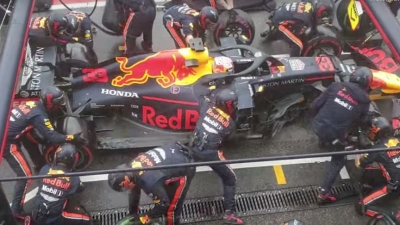
Pit-stops are among the most interesting aspects of all motor-racing sports and the few seconds gained or lost in a pit-stop could well decide the winner in a race. In F1 races, pit-stops are most often employed for changing tyres and for refuelling.
Pit-stops also come into effect when repairs are needed for any vehicle and any other change that the vehicle might require in race. Pit-stops in F1 is almost an art-form in itself as a number of people synchronise their actions to deliver what is required in the shortest possible time. The fastest pit-stops are in fact delivered under three seconds!
When the F1 championship began in 1950, pit stops were a fairly disorganized affair. But through the years, as the sport became more professional and the cars more advanced, the importance of a well-drilled pit stop became more crucial.
Pit stops tended to be disorganized, long and often chaotic as late as the 1970s – especially when a driver came in to make an unscheduled stop. The age of the modern pit stop arrived when changes were implemented to F1 regulations in 1994, by allowing in-race refueling. The rule of refueling lasted until 2009. After the last readjustments on the regulations a driver’s visit to the pits became breathtaking in both speed and efficiency.
Picture Credit : Google



